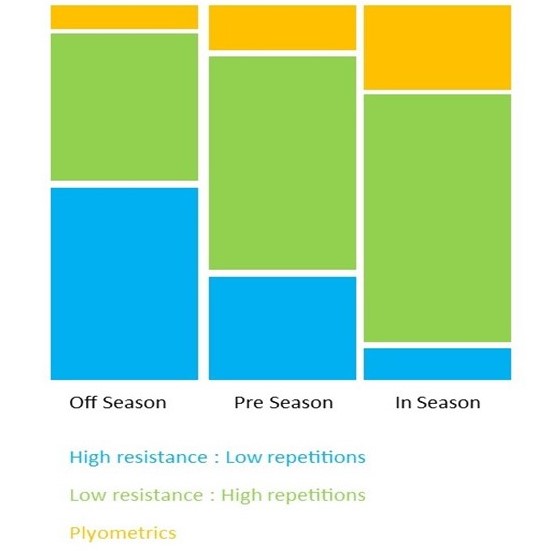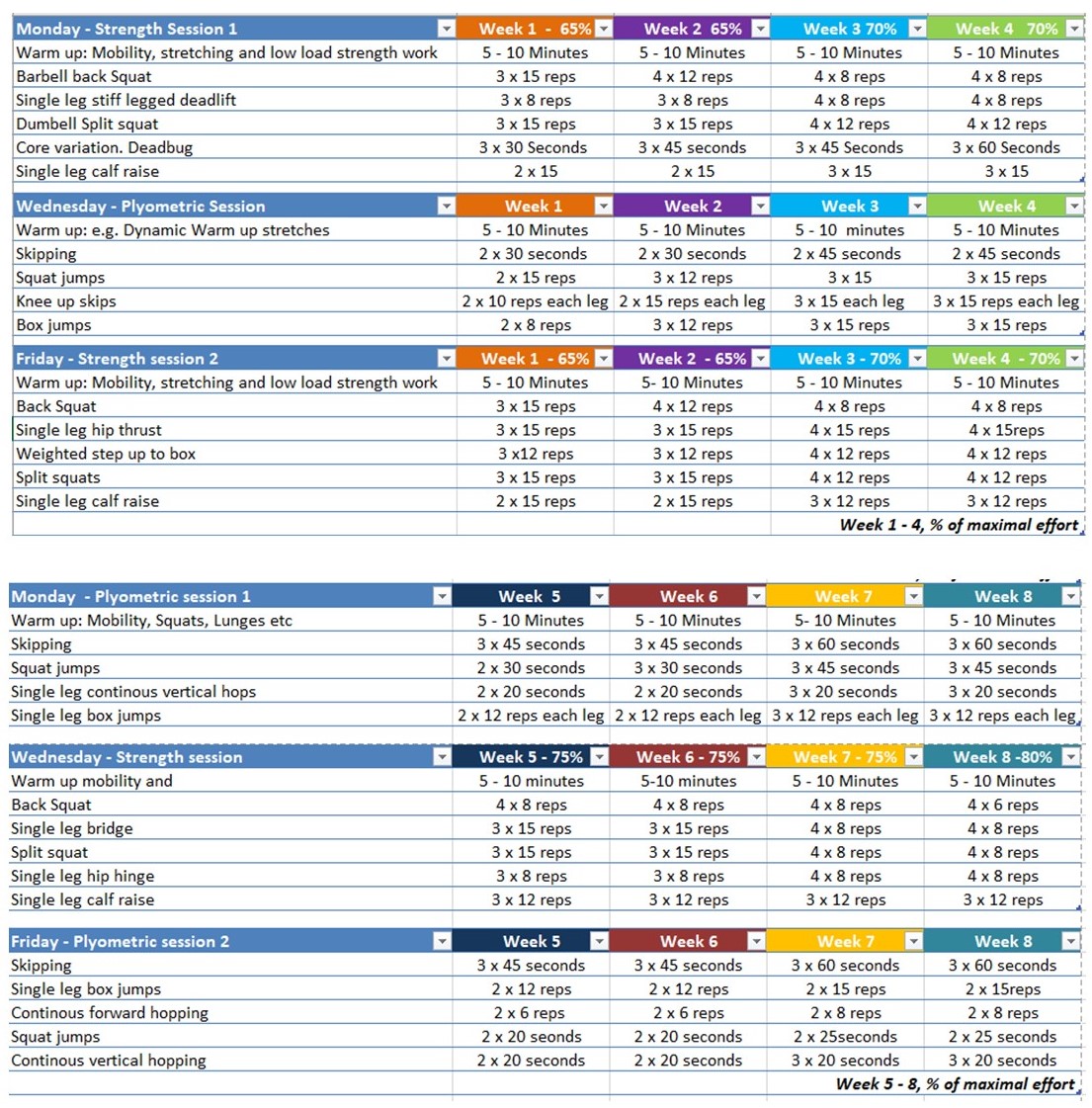You know that classic strength exercises such as squats, lunges and step ups are beneficial to your run training, but do you know how strength training should alter during different times in your run training season? Or where plyometrics should be used?
This sample plan, designed by our massage and rehabilitation therapist Dan, is designed to be used during your pre-season, as a start point to compliment your training before large increases of run training during your in / race season. It can also be used as an introduction to resistance training and plyometrics, starting with lower resistance and higher reps which will allow your body to adapt to resistance training and for you to focus on correct technique. The info graphic below is an example of how different rep ranges and resistance levels should vary throughout your run season, adapting to different training emphasis and stages of the season.
For example, in the off-season, when running training is reduced so strength can be prioritised, higher resistance is able to be utilised. This is because recovering from higher resistance will take longer than lower resistance and high reps. As your season progresses and you become closer to race day, strength training changes to higher reps and lower resistance to maintain strength whilst giving adequate recovery time to fit in with run training.
Plyometrics can form a vital component throughout the year, increasing during the in-season, but as with strength sessions, reducing to a lower intensity to allow for recovery times when close to race day.
The example plan below shows steady increase of sets and repetitions for strength and plyometric exercises throughout the weeks. This is used to allow for progression throughout the duration of the plan but also to avoid overtraining. Weight can be added to increase difficulty to the exercises, more weight should be added to sets with lower repetitions to increase difficulty but also to ensure that the load is sufficient to avoid undertraining. To increase strength in a muscle we need to be loading the muscle more as the weeks go on, an increase in load should be added if sets start to feel comfortable and rep ranges are reached with relative ease. Strength and conditioning work similarly to running. If you keep running the same distance at the same intensity, then you will not make the desired improvements and have a chance of regressing. There are many other ways to increase the load during a program, but weight is a great place to start to be able to see progression.
This plan is split into two, 4-week blocks. During the first 4-weeks increasing strength work is prioritised to build sufficient strength in the various muscles. This groundwork is vital before being able to move on to the next part of the program which will have a larger emphasis on plyometrics. An introductory plyometric session is in place for the first 4-weeks to introduce low load exercises, building suitable strength and power capacities in preparation for a later block with a larger emphasis on plyometrics.
Plyometric repetitions are often known as “contacts” and refers to the number of contacts on the ground during each set. A general recommendation for how many contacts per session are 80-100 spread across a variety of exercises, however certain exercises will place more load on the body than others, meaning that the number of contacts may not be equal between all exercises. Therefore, not only should contacts slowly increase but also the intensity of the exercises.
The slow increase of plyometrics helps the body to adapt and tolerate the explosive stress. Start with the simpler jumps and hops in the program and once they become comfortable and easy, then look to progress to the next part of the program which has more intense moves such as single leg jumps and bounds.
For further advice and help with formulating your personalised run strength programme, call us on 01454 540066 to book an appointment with Dan.




